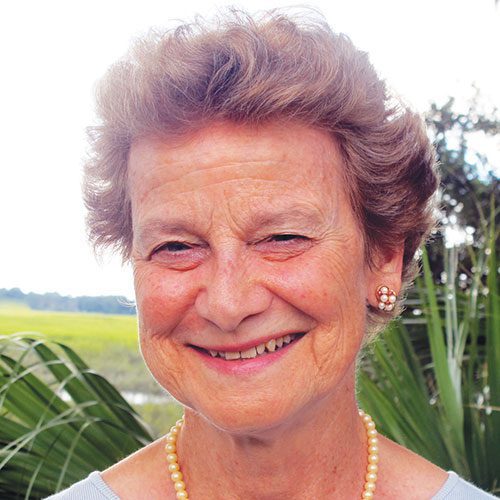As a seasoned travel writer, I can zip through the most complex of museums in no time at all and – with the help of the Internet and an interview or two – create a story that can spark enough interest to entice travelers to add it to their itinerary. But a new museum in Charleston has me so captivated that my first two-hour visit left me filled with questions, emotionally drained, and looking forward to a return visit in the not-too-distant future.
On June 27th the International African American Museum (IAAM) opened on Wharfside Street at Gadsden’s Wharf, where more than 40 percent of all enslaved African Americans entered the U.S. According to museum president and CEO Tonya Matthews, the location is often referred to as the “Ground Zero of importation of enslaved people into the United States,” those Africans who were forced to the Americas through the inhumanity of the Middle Passage.
The fact that a remarkable amount of thought and care went into the planning of this gorgeous contemporary structure on such a highly charged historical site becomes obvious immediately. Its architecture was defined by lead designer, the late Henry N. Cobb, who stated, “As the place where thousands of Africans from diverse cultures first set foot in North America, Gadsden’s Wharf is not just the right place to tell this story; it is hallowed ground. The special design challenge of the museum (was) to build on this site without occupying it.” Which incredibly, happened.
The largest African American-owned design firm in the nation, New York–based architectural firm Pei Cobb Freed & Partners, deliberately designed the 426-foot-long, 84-foot-wide single-story building to hover 13 feet above the ground, supported by 18 cylindrical pillars as a way of reconciling the trauma of the site’s deep ties to slavery. Most of the ground plane beneath the building remains open, representing the heart of the site’s collective memory. Actually, collective memory is the undercurrent of the entire museum. Architectural features direct visitors’ views to the Atlantic on the east and downtown Charleston on the west. The supporting columns are made of traditional oyster-shell tabby, also used as paving in portions of the landscape. On the east side of this open space, oriented to the harbor and ocean beyond, a shallow reflecting pool signifies the edge of Gadsden’s Wharf as it was at the beginning of the 19th century, at the peak of the slave trade.
Designed for LEED certification, the 150,000-square-foot museum is packed with six centuries of history. Transformative, empathetic storytelling, exceptional artifacts and exhibits combine with an impactful power of place to engage visitors with that history. Engagement would be my primary takeaway from the IAAM, the reason I spent so much time there without seeing everything, and the reason I’ll return. There’s simply so much to see, to read, to learn, to experience. So much I didn’t know about the African American journey.
Through beautifully presented, enormous photos, tribal art, contemporary fashion, interviews with local African American residents, and relics of protest and resistance, IAAM shines a bright light on how Africans and African Americans – by their diverse journeys, labor, resistance, and ingenuity – have shaped every aspect of our world. The museum boasts 12 permanent exhibits, nine galleries with arts and artifacts from struggles in America, and one 3,000-square-foot Special Exhibitions Gallery that features two or three exhibits per year and an ongoing series of digital exhibits published via the Google Arts & Cultural platforms. A permanent exhibit that’s a pure step into the African diaspora is a tiny praise house with a few pews. All of the music heard there is simple, heart-filling, emotional, and hopeful.
Though this facility isn’t a Smithsonian affiliate, in my humble opinion, it could be.
Outdoors, the beautifully landscaped African Ancestors Memorial Garden with elements of Lowcountry landscape allows a fresh air place to reflect on the significance of this historically sacred site, as it celebrates the arts, crafts, and labors of the culture. The same shallow pool is a metaphor for the Atlantic for the African diaspora, i.e. all those of African descent settled far from their ancestral homeland. Free to everyone, the garden is always open.
The question that arises for many who visit, as well as the raft of enthusiastic people that volunteer there, centers around whether the overall emotional effect of the museum is one of solemnity or of celebratory joy. From my own experience I’d say both. No question that many who come are overwhelmed with emotion and require time to process the amount of information presented. For folks who want or need to take a break, small “quiet rooms” are available for sitting, thinking, meditating, and/or simply being quiet to let one’s heart and brain settle. Chairs on an outdoor balcony facing the harbor and the Atlantic beyond provide another option to chill, stare at the water, and take in the experience.
I can only imagine the impact that this amount of direct history, interspersed with an unbelievable amount of trauma, which – sadly – in many forms continues today, must have on African Americans. According to its terrific website, the museum stands as “one of the nation’s newest platforms for the disruption of institutionalized racism as it evolves today.”
One of IAAM’s best-used features and the best illustration of how this treasure of information tells the full African American story is its Center for Family History, a groundbreaking research center. Here community members can explore their roots in FamilySearch kiosks or schedule a virtual one-on-one session with a member of a team of remarkable researchers that trace genealogy through photos, marriage records, archival tools, and the largest collection of United States Colored Troop (USCT) records outside of the National Archives.
Sometimes even a lineage that arrived on a slave ship through this very South Carolina port may be uncovered.
Built next to the fascinating South Carolina Aquarium, the IAAM has a website (iaamuseum.org) chock-full of info…like the museum. Though there’s no designated parking, neighborhood spaces with meters are often available, and a parking garage is only a short walk away.
As a child of the 1960’s, I remember watching on our first TV the Civil Rights marches in Birmingham, being confused by and angry at the KKK in white sheets on the sidelines carrying ugly signs, and weeping when police dogs and firehoses were turned on the African American protestors who only wanted the right to live a peaceful life in a Democratic country. Hopefully, the IAAM will have the power to open minds and hearts to help create a nation where all can truly be free.









